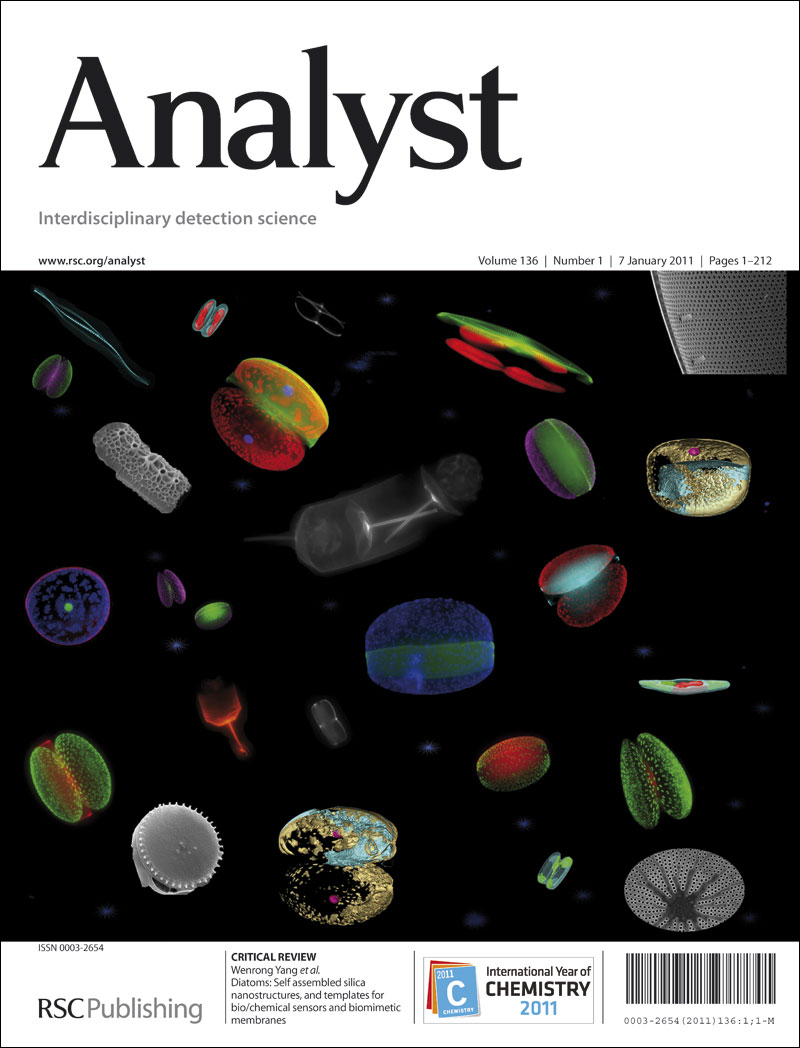A dual-phase coumarin-based ratiometric fluorescent probe for highly sensitive cyanide sensing and bioimaging applications.
IF 3.3
3区 化学
Q2 CHEMISTRY, ANALYTICAL
引用次数: 0
Abstract
A coumarin-based fluorescent probe, DHMH, was synthesized for the sensitive and selective detection of cyanide ions (CN-) over other competing anions. This probe exhibited a dual recognition mechanism for cyanide through a change in its ratiometric emission in both solution and solid phases. The chemical structure of DHMH was characterized using several spectroscopic techniques. In solution, an adduct was formed after the incremental addition of cyanide to DHMH through a mechanism involving deprotonation with nucleophilic addition, thereby leading to a hypsochromic shift. On the other hand, in the solid phase, the interaction was attributed exclusively to nucleophilic addition, thereby resulting in a bathochromic shift. The sensing mechanism for cyanide detection was explored through 1H-NMR titration, mass spectrometry, infrared spectroscopy and density functional theory (DFT) calculations. The detection limit of DHMH for CN- was determined to be (0.64 ± 0.13) × 10-6 M. DHMH demonstrated outstanding performance in real water samples, confirming its practical applicability for environmental monitoring. Furthermore, DHMH successfully facilitated the live-cell imaging of intracellular cyanide, showcasing its potential for biological and environmental cyanide sensing. This work highlights DHMH as a versatile sensor with broad application prospects in chemical sensing and bioimaging.一种基于香豆素的双相比例荧光探针,用于高灵敏度氰化物传感和生物成像应用。
合成了一种基于香豆素的荧光探针DHMH,用于对氰化物离子(CN-)的敏感和选择性检测。该探针通过改变氰化物在溶液和固相中的比例发射,表现出对氰化物的双重识别机制。采用多种光谱技术对DHMH的化学结构进行了表征。在溶液中,氰化物加入DHMH后,通过脱质子和亲核加成的机制形成加合物,从而导致次变色。另一方面,在固相中,相互作用完全归因于亲核加成,从而导致了色移。通过1H-NMR滴定法、质谱法、红外光谱法和密度泛函理论(DFT)计算,探讨了氰化物检测的传感机理。测定了DHMH对CN-的检出限为(0.64±0.13)× 10-6 m, DHMH在实际水样中表现优异,证实了其在环境监测中的实用性。此外,DHMH成功地促进了细胞内氰化物的活细胞成像,展示了其在生物和环境氰化物传感方面的潜力。本研究突出了DHMH作为一种多功能传感器在化学传感和生物成像方面具有广阔的应用前景。
本文章由计算机程序翻译,如有差异,请以英文原文为准。
求助全文
约1分钟内获得全文
求助全文
来源期刊

Analyst
化学-分析化学
CiteScore
7.80
自引率
4.80%
发文量
636
审稿时长
1.9 months
期刊介绍:
"Analyst" journal is the home of premier fundamental discoveries, inventions and applications in the analytical and bioanalytical sciences.
 求助内容:
求助内容: 应助结果提醒方式:
应助结果提醒方式:


